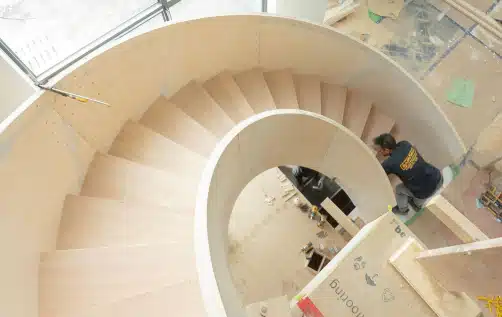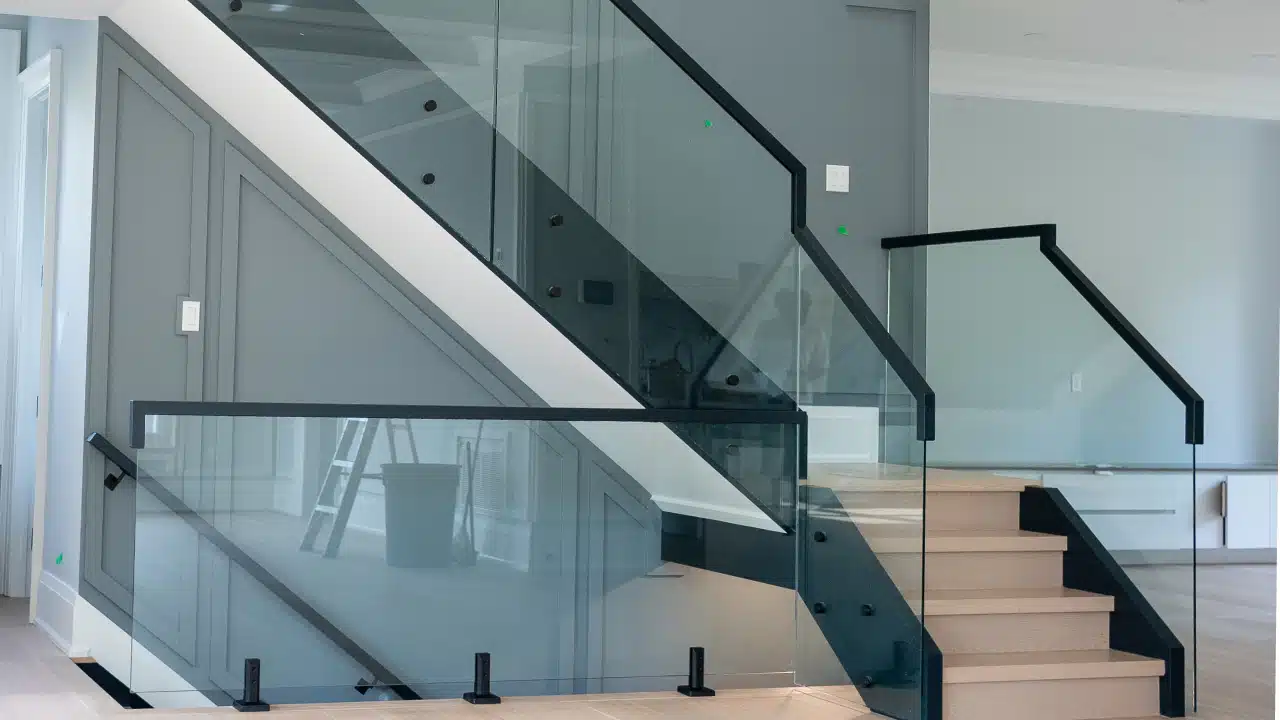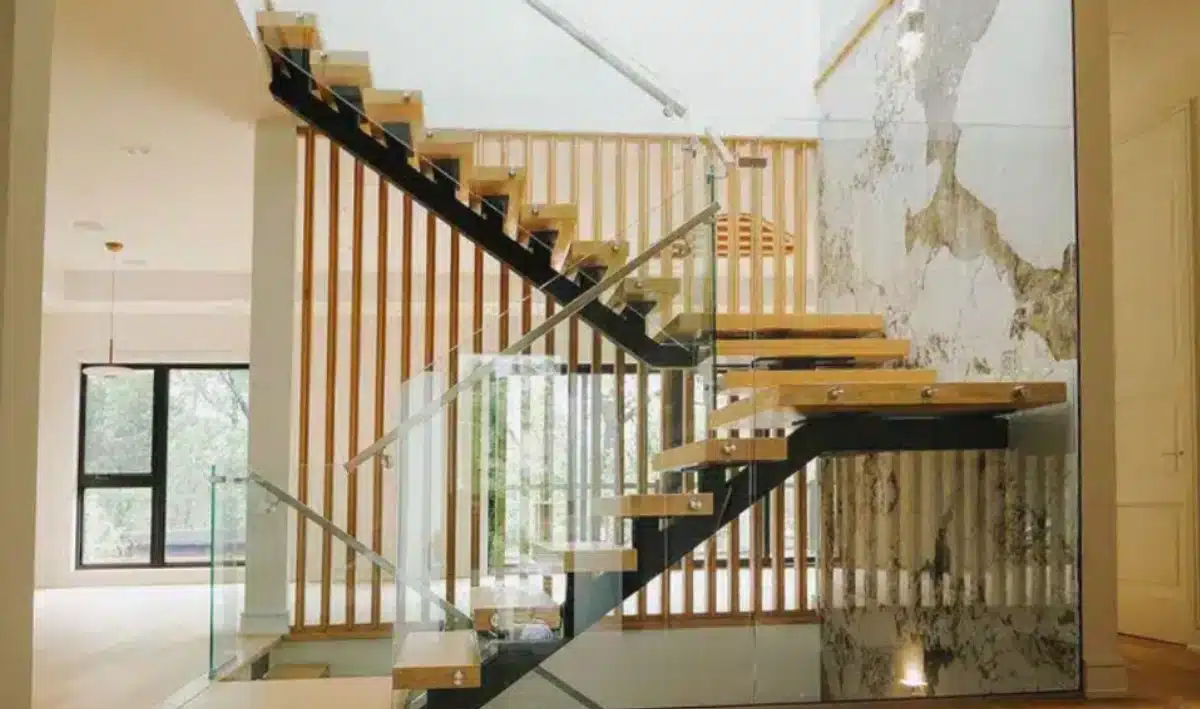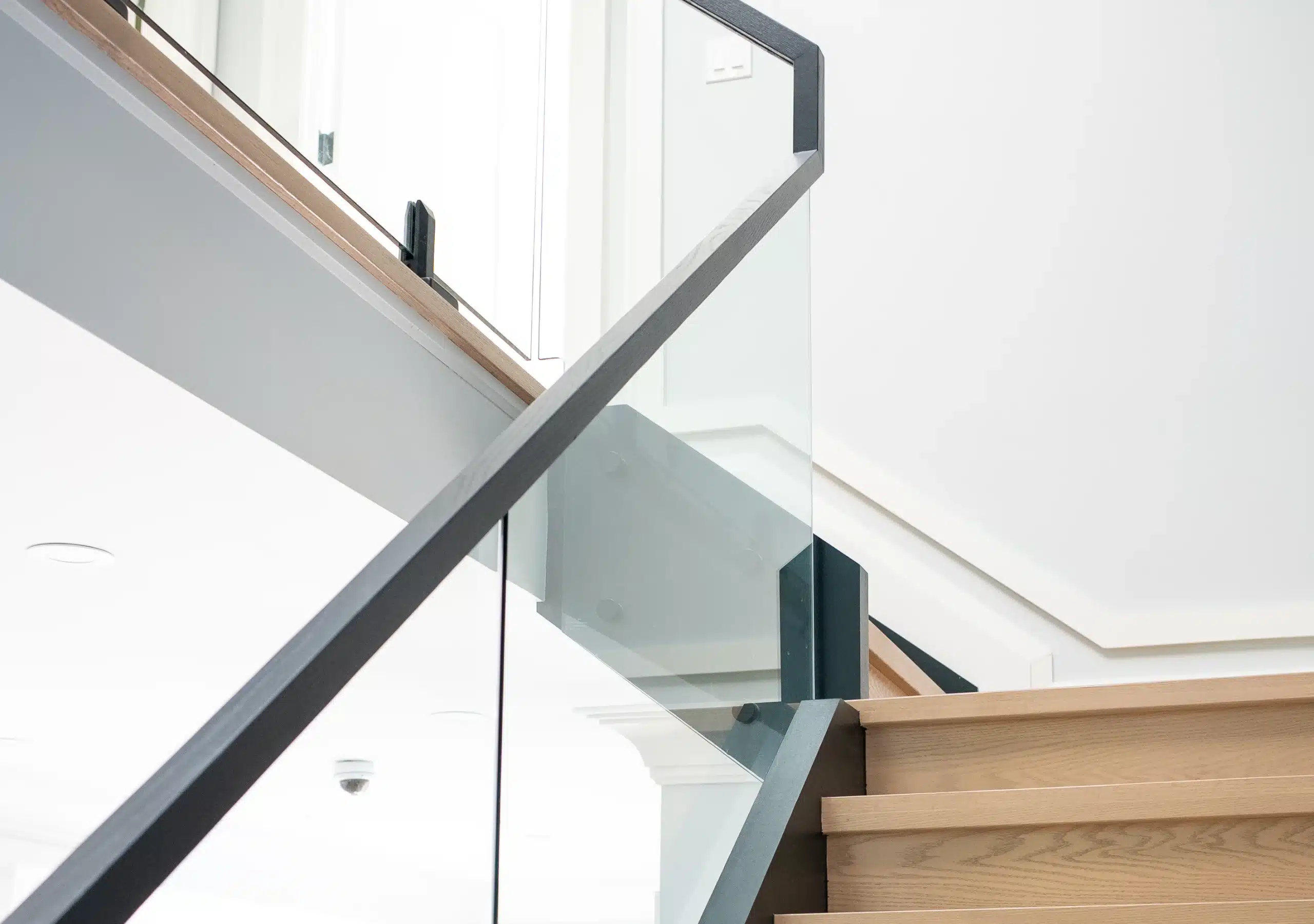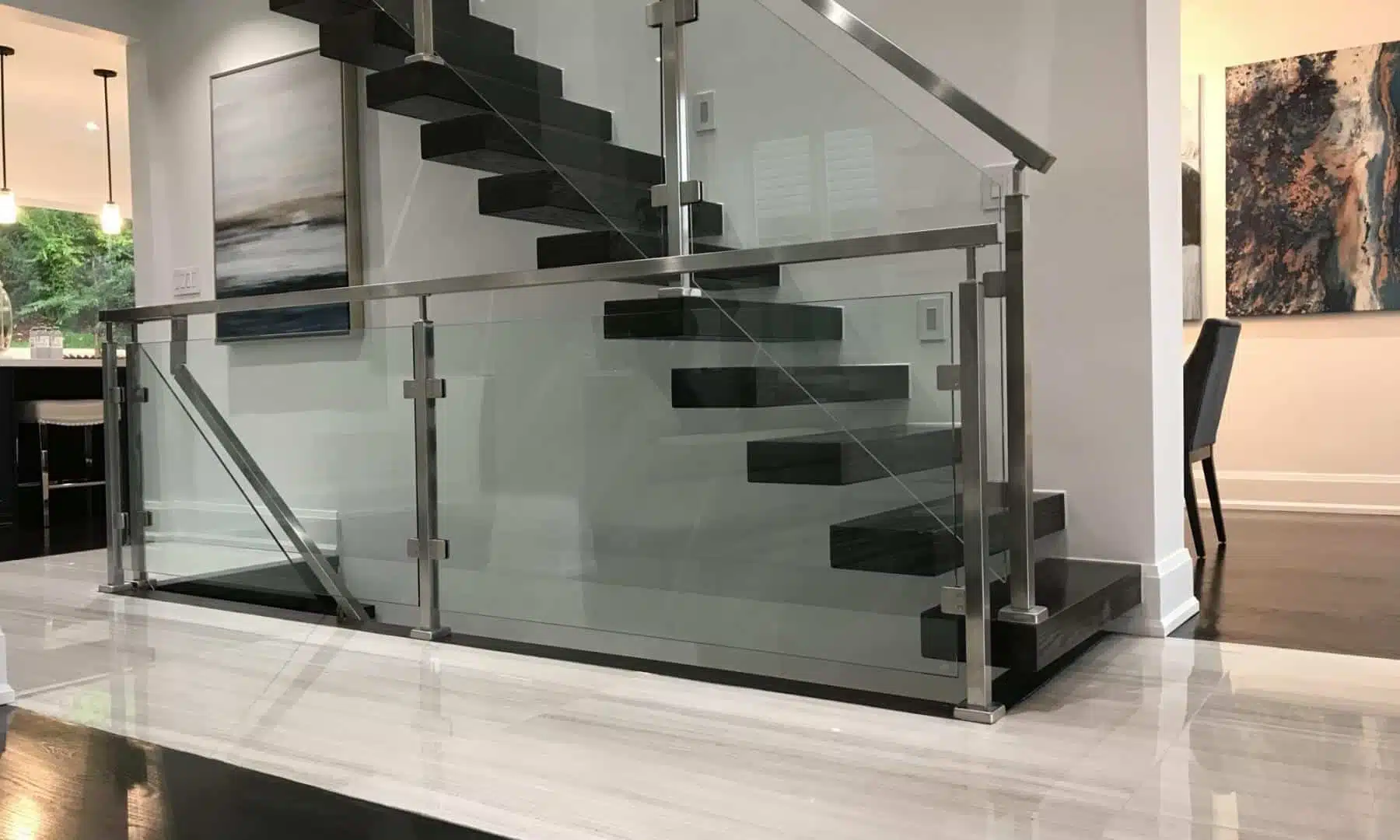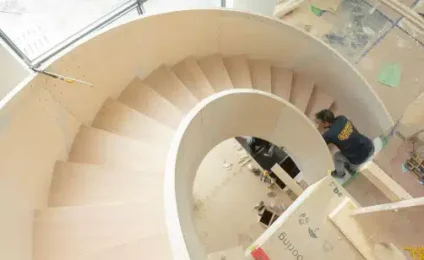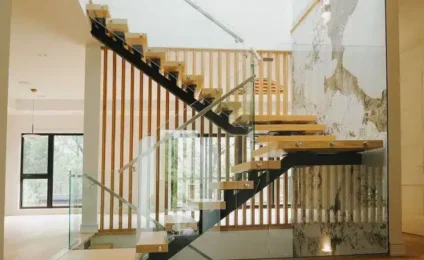Choosing the right modern staircase designs is more than just a functional decision, it’s a key architectural element that shapes the feel of your entire home. In a design-forward city like Toronto, where space optimization meets modern aesthetics, staircase selection plays a huge role in both style and structure.
In this article, we explore the most popular modern staircase types used in Toronto homes, with pros, cons, expert insights, and practical advice to help you choose the right one for your project.
Floating Staircases
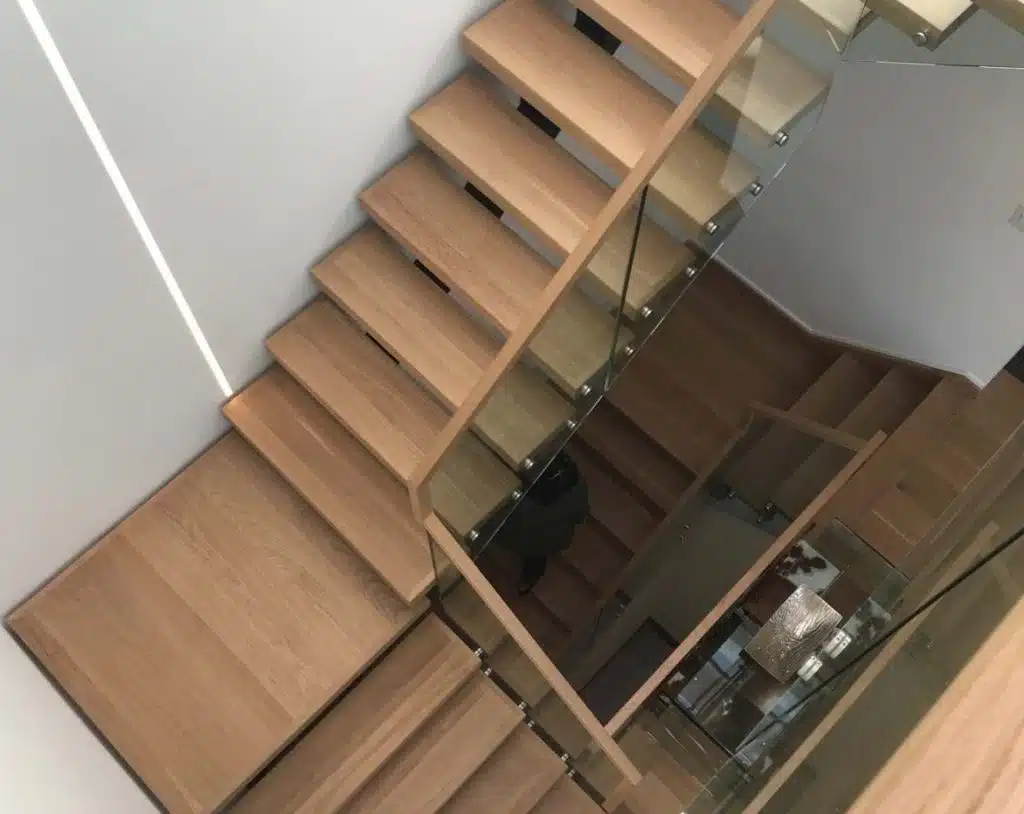
Floating staircases are characterized by their “suspended” appearance, where treads appear to be unsupported or anchored directly into the wall with minimal visible framework.
Pros:
- Enhances open-concept designs
- Extremely modern and minimalist
- Allows natural light to pass through
- Creates visual space in small or narrow areas
Cons:
- More expensive than traditional stairs
- Requires careful engineering and professional installation
- May not suit homes with young children or pets without added safety features
Expert Tip:
“In Toronto’s newer condos and townhomes, we’ve seen a sharp increase in floating stair installations—especially when paired with glass railings to maximize visibility and light.” — Darvish Inc Design Team
Spiral Staircases
A spiral staircase winds around a central pole, forming a tight circular or helical structure. Often used in small spaces or as secondary staircases.
Pros:
- Excellent space-saving solution
- Adds architectural flair and artistic touch
- Great for lofts, basements, or rooftop access
- Can be built with wood, metal, or glass for diverse styles
Cons:
- Steeper than conventional stairs—can be harder to navigate
- Not ideal for moving large furniture
- May not meet building code for primary stairs in some cases
Use Case in Toronto:
Spiral stairs are often used in laneway homes or basement apartments in the downtown core where square footage is tight but vertical access is needed.
Straight Staircases
A straightforward design—literally. Straight staircases consist of a single, linear flight with no change in direction.
Pros:
- Easiest to design, build, and install
- Cost-effective and structurally simple
- Compatible with almost any railing or tread material
- Works well in both modern and traditional homes
Cons:
- Requires more horizontal space
- May feel too basic in highly stylized interiors
- Can be less dramatic visually compared to curved or floating options
Local Insight:
Straight stairs are commonly used in detached homes across North York and Vaughan, especially when the focus is on clean lines and practicality.
U-Shaped (Switchback) Staircases
A U-shaped staircase consists of two parallel flights joined by a landing that creates a 180-degree turn.
Pros:
- Ideal for multi-level homes and tighter floor plans
- Breaks up long flights—easier to climb and safer
- Visually dynamic and adds structural rhythm
- Works well with both metal and wood finishes
Cons:
- Requires more structural planning
- Slightly more expensive than straight stairs
- Needs adequate ceiling clearance on both levels
Pro Tip:
U-shaped designs are common in Toronto infill homes and new builds that aim to optimize vertical space without compromising design flow.
Curved Staircases
A curved staircase follows a sweeping, gentle arc rather than sharp turns. These are typically custom-built to match the home’s architecture.
Pros:
- Offers high-end, luxurious appeal
- Perfect for entryways or open foyers
- Allows smooth transitions between levels
- Can serve as a statement piece in larger homes
Cons:
- Most expensive to build and install
- Requires specialized craftsmanship
- Takes up more floor space than other designs
When to Use:
Best for luxury homes in areas like Richmond Hill or Forest Hill where dramatic design elements are encouraged.
Comparison Table: Modern Stair Types
| Staircase Type | Best For | Style Impact | Space Efficiency |
|---|---|---|---|
| Floating | Modern condos/townhomes | High | High |
| Spiral | Small homes/basements | Moderate–High | Very High |
| Straight | Any layout | Low–Moderate | Moderate |
| U-Shaped | Mid-size homes, infill builds | Moderate–High | High |
| Curved | Luxury/open-concept homes | Very High | Low |
How to Choose the Right Staircase Design?
When deciding on your staircase style in Toronto, consider:
- Home layout & space limitations
Small home? Think spiral. Open-concept? Go floating. - Design aesthetic
Minimalist? Try straight or floating. Traditional? Curved may suit better. - Budget
Know that floating and curved designs will be pricier due to engineering and materials. - Building codes
Toronto’s building code requires specific tread depths, railing heights, and load tolerances—always consult a certified stair company.
Final Thoughts
Your staircase is more than just a connection between floors, it’s a design statement, a safety feature, and a long-term investment. Whether you’re remodeling or building from scratch in Toronto, selecting the right type of modern staircase can significantly elevate your home’s value and visual impact.
Working with a trusted, local expert like Darvish Inc ensures that your staircase design aligns with your vision, space, and structural needs.
Ready to Build?
For more inspiration, explore our staircase Toronto page, where we showcase real projects, styles, and materials used across homes in the GTA. Contact Darvish Inc for a free consultation and discover how your ideal staircase can come to life in your Toronto home.
